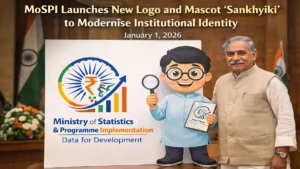
The six-member Monetary Policy Committee (MPC) voted unanimously to keep the repo rate unchanged at 4 per cent. MPC committee keeps the reverse repo rate unchanged at 3.35 per cent as Russia’s invasion of Ukraine added to a rise in inflation. The Reserve Bank of India’s Monetary Policy Committee headed by Reserve Bank of India (RBI) Governor Shaktikanta Das kept the repo rate unchanged for the 11th consecutive time. The repo rate or the short-term lending rate was the last cut on May 22, 2020. Since then, the rate remains at a historic low of 4 per cent.
Buy Prime Test Series for all Banking, SSC, Insurance & other exams
The Marginal Standing Facility (MSF) rate and bank rates remain unchanged:
- Policy Repo Rate: 4.00%
- Reverse Repo Rate: 3.35%
- Marginal Standing Facility Rate: 4.25%
- Bank Rate: 4.25%
- CRR: 4%
- SLR: 18.00%
Key Points:
- The GDP growth forecast has been lowered to 7.2 per cent, owing to inflationary pressures due to the ongoing Russia Ukraine War. Earlier, the central bank had kept the GDP growth rate at 7.8 per cent.
- RBI announced that now people can withdraw money from ATMs without a card in all banks across the nation. This has been done to give a push to Digital India.
- Net worth requirement for Bharat Bill Payments System Operating Units lowered from Rs 100 crore to Rs 25 crore.
- Rationalisation of risk weights for individual housing loans to be extended till March 31, 2023.
- RBI sees the Current account deficit at sustainable levels and forex reserves at $606.5 billion.
- Inflation is now projected at 5.7% in 2022-23 with Q1 at 6.3%, Q2 at 5%, Q3 at 5.4% and Q4 at 5.1%.
- India’s 10-year bond yield rises to 7%, the highest since 2019.
The composition of the Monetary Policy Committee is as follows:
- Governor of the Reserve Bank of India – Chairperson, ex officio: Shri Shaktikanta Das.
- Deputy Governor of the Reserve Bank of India, in charge of Monetary Policy– Member, ex officio: Dr Michael Debabrata Patra.
- One officer of the Reserve Bank of India to be nominated by the Central Board – Member, ex officio: Dr Mridul K. Saggar.
- A professor at the Mumbai-based Indira Gandhi Institute of Developmental Research: Prof. Ashima Goyal.
- A professor of finance at the Indian Institute of Management in Ahmedabad: Prof. Jayanth R Varma.
- An agricultural economist and a senior adviser with the National Council of Applied Economic Research in New Delhi: Dr Shashanka Bhide.
Some important instruments of Monetary Policy:
The RBI’s Monetary Policy has several direct and indirect instruments which are used for implementing the monetary policy. Some important instruments of Monetary Policy are as follows:
Repo Rate: It is the (fixed) interest rate at which banks can borrow overnight liquidity from the Reserve Bank of India against the collateral of government and other approved securities under the liquidity adjustment facility (LAF).
Reverse Repo Rate: It is the (fixed) interest rate at which the Reserve Bank of India can absorb liquidity from banks on an overnight basis, against the collateral of eligible government securities under the LAF.
Liquidity Adjustment Facility (LAF): The LAF has overnight as well as term repo auctions under it. The term repo helps in the development of the inter-bank term money market. This market sets the benchmarks for the pricing of loans and deposits. This helps in improving the transmission of monetary policy. As per the evolving market conditions, the Reserve Bank of India also conducts variable interest rate reverse repo auctions.
Marginal Standing Facility (MSF): MSF is a provision that enables the scheduled commercial banks to borrow an additional amount of overnight money from the Reserve Bank of India. Bank can do this by dipping into their Statutory Liquidity Ratio (SLR) portfolio up to a limit at a penal rate of interest. This helps the banks to sustain the unanticipated liquidity shocks faced by them.
Important takeaways for all competitive exams:
- RBI 25th Governor: Shaktikanta Das; Headquarters: Mumbai; Founded: 1 April 1935, Kolkata.




 Which Crop is known as the King of Oilse...
Which Crop is known as the King of Oilse...
 Which River is known as the Gold River o...
Which River is known as the Gold River o...
 MoSPI Launches New Logo and Mascot ‘Sank...
MoSPI Launches New Logo and Mascot ‘Sank...







